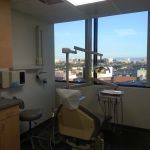
- Understanding Jaw Pain Related to Dental Issues
- Common Causes of Jaw Pain Linked to Dental Problems
- Treatment Options for Jaw Pain Related to Dental Issues
- Professional Advice and When to See a Dentist
- Real-Life Case Study on Managing Dental Jaw Pain
1. Understanding Jaw Pain Related to Dental Issues
Jaw pain is a common complaint that many people experience at some point in their lives. When the pain is related to dental problems, it can range from mild discomfort to severe, persistent pain that affects daily activities such as eating and speaking. Understanding how dental health impacts the jaw is crucial for effective treatment.
The jaw functions closely with the teeth, gums, and temporomandibular joint (TMJ). Dental problems such as cavities, infections, or impacted teeth often create tension or inflammation in the jaw muscles and joints, causing pain. This interconnection means that treating jaw pain effectively requires addressing the underlying dental causes.
In dentistry, jaw pain related to dental issues is often described as dental-related jaw discomfort, highlighting that the source of pain can be rooted in teeth or surrounding tissues rather than the jawbone alone.
1.1 How Dental Health Influences Jaw Function
Proper alignment and health of the teeth ensure the jaw moves smoothly. When dental problems disrupt this harmony, such as misaligned teeth or tooth decay, the jaw muscles may compensate by overworking, leading to soreness and pain. Additionally, infections or abscesses in the mouth can cause swelling that radiates pain into the jaw area.
1.2 Why Early Detection Matters
Identifying dental causes of jaw pain early can prevent more serious complications. For instance, untreated cavities may progress to infections affecting the jawbone, while gum disease can trigger chronic inflammation leading to long-term discomfort.
2. Common Causes of Jaw Pain Linked to Dental Problems
Jaw pain related to dental problems can stem from various issues. Below are some of the most frequent causes:
2.1 Tooth Decay and Abscesses
Severe tooth decay can lead to infections, creating painful abscesses that often cause sharp jaw pain. This infection spreads beyond the tooth, irritating nerves and tissues in the jaw area.
2.2 Impacted or Wisdom Teeth
Wisdom teeth that do not emerge properly can press against surrounding teeth and jawbone, causing discomfort and swelling. This pressure results in persistent jaw pain and sometimes limited jaw movement.
2.3 Temporomandibular Joint Disorders (TMJ)
TMJ disorders are often linked with dental problems such as misaligned bites or teeth grinding (bruxism). These disorders cause pain and clicking in the jaw joint, sometimes accompanied by headaches and earaches.
2.4 Gum Disease
Advanced gum disease (periodontitis) causes inflammation and damage to the tissues supporting teeth, which can radiate pain to the jawbone and muscles.
3. Treatment Options for Jaw Pain Related to Dental Issues
Treating jaw pain effectively means targeting the root dental cause while also managing symptoms. Here are several strategies:
3.1 Dental Care and Procedures
Addressing cavities, infections, or impacted teeth through fillings, root canals, or extractions is fundamental. For example, draining a dental abscess quickly relieves intense pain and prevents the spread of infection.
3.2 Medication and Pain Management
Over-the-counter pain relievers and anti-inflammatory drugs can reduce jaw discomfort. In some cases, dentists may prescribe antibiotics to treat infections causing jaw pain.
3.3 Mouthguards and Bite Adjustment
For jaw pain caused by teeth grinding or TMJ disorders, customized mouthguards can protect teeth and relieve muscle tension. Additionally, bite adjustments or orthodontic treatments can correct misalignments contributing to pain.
3.4 Home Care Practices
Applying warm compresses, practicing gentle jaw exercises, and maintaining good oral hygiene support recovery. Avoiding hard or chewy foods also helps reduce strain on the jaw.
4. Professional Advice and When to See a Dentist
Consulting a dental professional is essential when jaw pain persists beyond a few days or worsens. Sudden severe pain, swelling, or difficulty opening the mouth are warning signs of serious issues.
4.1 Diagnostic Tools Used by Dentists
Dentists use X-rays, CT scans, and physical examinations to pinpoint dental causes of jaw pain. Accurate diagnosis ensures targeted treatment and quicker relief.
4.2 Preventative Measures Recommended by Experts
Regular dental check-ups, maintaining proper oral hygiene, and wearing protective devices during sports or sleep can prevent many dental-related jaw problems.
For those seeking tailored advice and professional dental products or services, Dentistry Toothtruth offers a wide range of options suitable for managing jaw pain related to dental issues.
5. Real-Life Case Study on Managing Dental Jaw Pain
Consider the story of Sarah, a 34-year-old who experienced sharp jaw pain linked to an impacted wisdom tooth. Initially dismissing the discomfort as stress-related, she delayed treatment for weeks. The pain intensified, accompanied by swelling and difficulty eating.
After visiting her dentist, Sarah underwent an X-ray revealing the impacted tooth pressing against her jawbone. A surgical extraction was performed, followed by a short course of antibiotics and pain medication. With proper aftercare, her jaw pain subsided significantly within two weeks.
This case highlights the importance of not ignoring jaw pain and seeking dental evaluation promptly. Sarah’s experience also shows how combining professional treatment with home care effectively resolves jaw pain tied to dental problems.







 That Broadway Smile5.0 (1689 review)
That Broadway Smile5.0 (1689 review) East Greenwich Family Dental | Dentist in East Greenwich RI | DMD4.0 (182 review)
East Greenwich Family Dental | Dentist in East Greenwich RI | DMD4.0 (182 review) Dr. Albert R. Arcand, DMD4.0 (22 review)
Dr. Albert R. Arcand, DMD4.0 (22 review) Dental Implants and Periodontology of Massapequa4.0 (198 review)
Dental Implants and Periodontology of Massapequa4.0 (198 review) Brick Dental Studio4.0 (101 review)
Brick Dental Studio4.0 (101 review) Claire L. Ho, DDS5.0 (5 review)
Claire L. Ho, DDS5.0 (5 review) The Importance of Oral Health Education During Pregnancy for a Healthy Pregnancy
The Importance of Oral Health Education During Pregnancy for a Healthy Pregnancy Best Tips for Brushing Your Teeth Properly for Healthy Gums: Essential Techniques for Oral Health
Best Tips for Brushing Your Teeth Properly for Healthy Gums: Essential Techniques for Oral Health Why Skipping Dental Checkups Can Lead to Bigger Oral Health Problems
Why Skipping Dental Checkups Can Lead to Bigger Oral Health Problems Advantages of Porcelain Dental Restorations
Advantages of Porcelain Dental Restorations How Can Diabetes Cause Tooth and Gum Problems? Preventing and Managing Oral Health Issues
How Can Diabetes Cause Tooth and Gum Problems? Preventing and Managing Oral Health Issues Healthy Habits for Promoting Good Oral Health and Hygiene: Tips for a Healthy Smile
Healthy Habits for Promoting Good Oral Health and Hygiene: Tips for a Healthy Smile